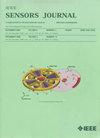Decision-Making Method Combining Path-Constraint-Based Action Compensation for Autonomous Vehicles
IF 4.3
2区 综合性期刊
Q1 ENGINEERING, ELECTRICAL & ELECTRONIC
引用次数: 0
Abstract
To improve the performance and reliability of the decision-making process for autonomous vehicles, a decision-making method using deep reinforcement learning (DRL) and combining path-constraint-based action compensation is proposed in this article. In the decision-making method, an action compensation module based on path constraints is developed, which enhances the reliability of the decision of vehicle and ensures that the final output actions meet safety and comfort requirements. In addition, the traditional reinforcement learning task is divided into three subtasks, and the switching between the subtasks is realized by the scene recognition module. It reduces the complexity of the task and improves the training efficiency and sample utilization. Moreover, rewards and penalties are designed within path constraints, incorporating the distance from the lane center and the heading deviation angle. This can provide efficient and timely feedback for the vehicle during environmental interactions, accelerating the training process and improving decision-making performance. Finally, experiments are conducted using the CARLA simulation platform. The results show that the proposed method not only enables reliable decision-making but also improves the performance of vehicle, ensuring smooth control of the vehicle through the driving task, which verifies the effectiveness of the proposed method.基于路径约束的自动驾驶汽车动作补偿决策方法
为了提高自动驾驶汽车决策过程的性能和可靠性,本文提出了一种基于深度强化学习(DRL)并结合基于路径约束的动作补偿的决策方法。在决策方法中,开发了基于路径约束的动作补偿模块,提高了车辆决策的可靠性,保证了最终输出的动作满足安全性和舒适性要求。此外,将传统的强化学习任务划分为三个子任务,并通过场景识别模块实现子任务之间的切换。它降低了任务的复杂性,提高了训练效率和样本利用率。在路径约束条件下,结合到球道中心的距离和航向偏离角,设计了奖罚机制。这可以在环境交互过程中为车辆提供有效和及时的反馈,加快训练过程,提高决策性能。最后,利用CARLA仿真平台进行了实验。结果表明,所提方法不仅实现了可靠的决策,而且提高了车辆的性能,保证了车辆顺利完成驾驶任务的控制,验证了所提方法的有效性。
本文章由计算机程序翻译,如有差异,请以英文原文为准。
求助全文
约1分钟内获得全文
求助全文
来源期刊

IEEE Sensors Journal
工程技术-工程:电子与电气
CiteScore
7.70
自引率
14.00%
发文量
2058
审稿时长
5.2 months
期刊介绍:
The fields of interest of the IEEE Sensors Journal are the theory, design , fabrication, manufacturing and applications of devices for sensing and transducing physical, chemical and biological phenomena, with emphasis on the electronics and physics aspect of sensors and integrated sensors-actuators. IEEE Sensors Journal deals with the following:
-Sensor Phenomenology, Modelling, and Evaluation
-Sensor Materials, Processing, and Fabrication
-Chemical and Gas Sensors
-Microfluidics and Biosensors
-Optical Sensors
-Physical Sensors: Temperature, Mechanical, Magnetic, and others
-Acoustic and Ultrasonic Sensors
-Sensor Packaging
-Sensor Networks
-Sensor Applications
-Sensor Systems: Signals, Processing, and Interfaces
-Actuators and Sensor Power Systems
-Sensor Signal Processing for high precision and stability (amplification, filtering, linearization, modulation/demodulation) and under harsh conditions (EMC, radiation, humidity, temperature); energy consumption/harvesting
-Sensor Data Processing (soft computing with sensor data, e.g., pattern recognition, machine learning, evolutionary computation; sensor data fusion, processing of wave e.g., electromagnetic and acoustic; and non-wave, e.g., chemical, gravity, particle, thermal, radiative and non-radiative sensor data, detection, estimation and classification based on sensor data)
-Sensors in Industrial Practice
 求助内容:
求助内容: 应助结果提醒方式:
应助结果提醒方式:


